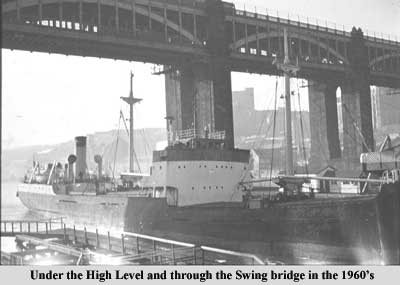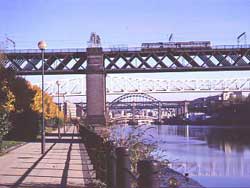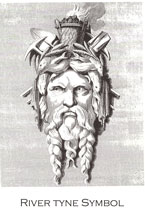
BRIDGES - GENERAL INFORMATION

"Imagine a world without bridges. Think of the days and nights of weary travel which the simplest bridge has saved, and the millions of lives that have crossed by its silent aid. Think of the sacrifices which bridges have taken in danger, adventure and toil. Look at the sea, the river, or the valley and dream that you have been aked to bridge them by steel, concrete, wood, or stone, being sure all the while that trains, men, tanks, food, or motor-cars can rest as surely as did those who dwelled uon the bridge of old London"
The Work Of The Bridge Builders, J Gordon Peirson. 1948. From Introduction by A M Low.
Bridges are among the most beautiful structures created by man. Not only the picturesque old stone bridges seen in rural settings, but the bridges of the railway age and the twentieth century can also be attractive to the eye whether built in concrete, iron or steel. The Tyne has no really big bridges rivalling those on, say, the Forth or the Humber but it is rich in bridges of many different types and periods and some of the most striking bridges anywhere are located in the space of a mile or so of riverbank on Tyneside which surely must have one of the greatest concentrations of bridges anywhere in the world.
Bridge engineers are presented with many problems - what kind of load must the bridge bear? What sort of weather must it endure? What is the nature of the river it is to cross, its width, depth, rate of flow, nature of riverbed, tendency to flood, etc.? How much money is available for its construction? Engineers have developed various methods of solving these problems down the ages. The beam bridge, arch bridge, girder bridge, cantilever, suspension, and movable bridge have all been used at one time or another and examples of each are to be found in the UK and elsewhere.
The earliest bridge builders in Britain were the Romans and when their bridges fell into decay they were probably replaced by fords and ferries. The Romans left Britain and their bridges decayed, but in medieval times bridge building skills were re-discovered, the church often being responsible for bridge building and sometimes a chapel would be part of the bridge. Bridges were often defended and hence had a military purpose too and the design would reflect this. In later years landowners built bridges to stimulate development and allow agricultural and mineral wealth to be transported and bridges became links in the system of turnpike roads with tolls payable. Responsibility for the upkeep of road bridges eventually passed to the Counties themselves. The needs of industry and railways stimulated further development of bridge design and today the needs of road transport and of leisure dictate the building of new bridges. Whether you sweep over it in a car, rumble over on a train, or stand on a parapet gazing over into the river we are all aware of bridges. We do tend to take bridges mostly for granted, except when we go to look at a new bridge which is either very long or has some other special feature which makes it out of the ordinary, or which has become familiar from photographs or television exposure. Then we notice the many features of a bridge and can marvel at the skill of the people who designed and built it.
- Beam, concrete - Haydon A69 Bridge.
- Beam, girder - King Edward Bridge.
- Arch - Tyne Bridge.
- Suspension - Scotswood Chain Bridge.
- Cantilever - Forth rail bridge. (no examples on Tyne).
- Movable - Swing Bridge.
- For more information on bridge types see the website of The Science Museum - Making The Modern World

